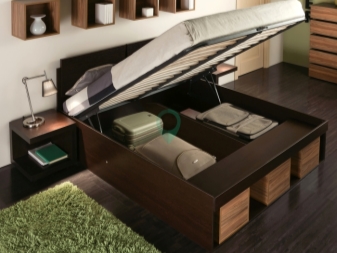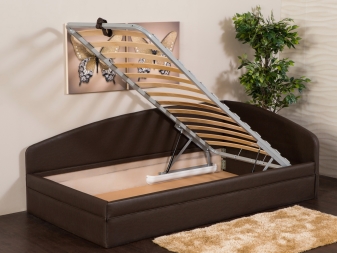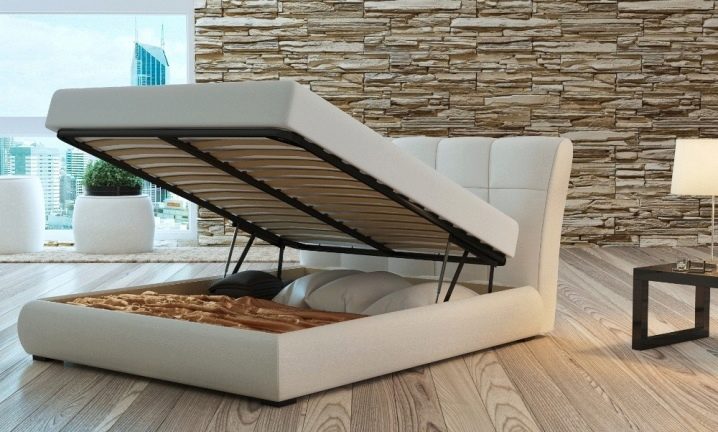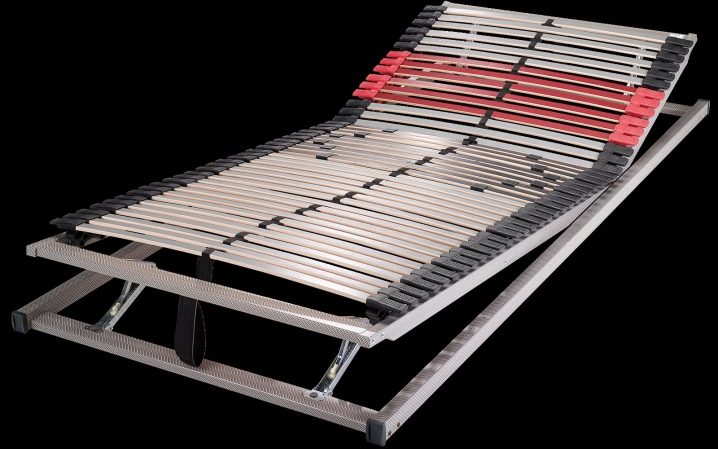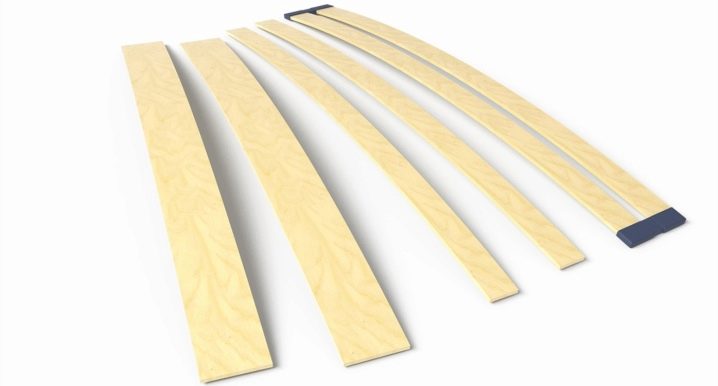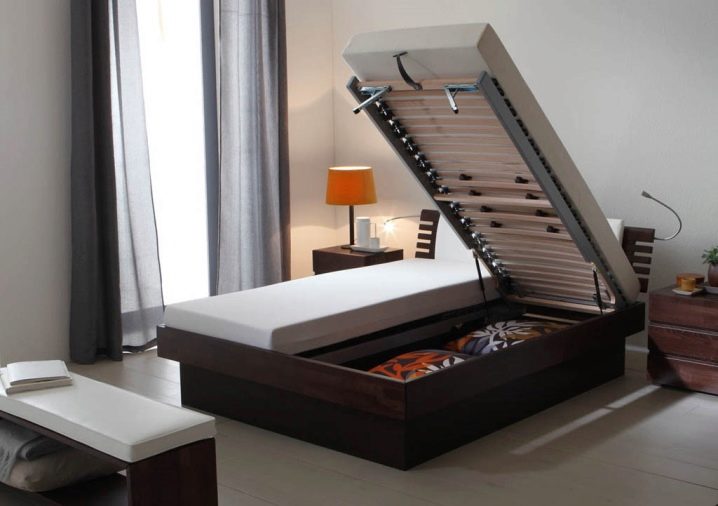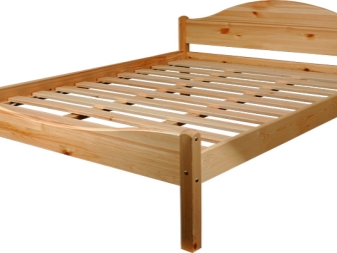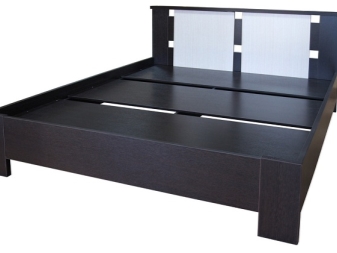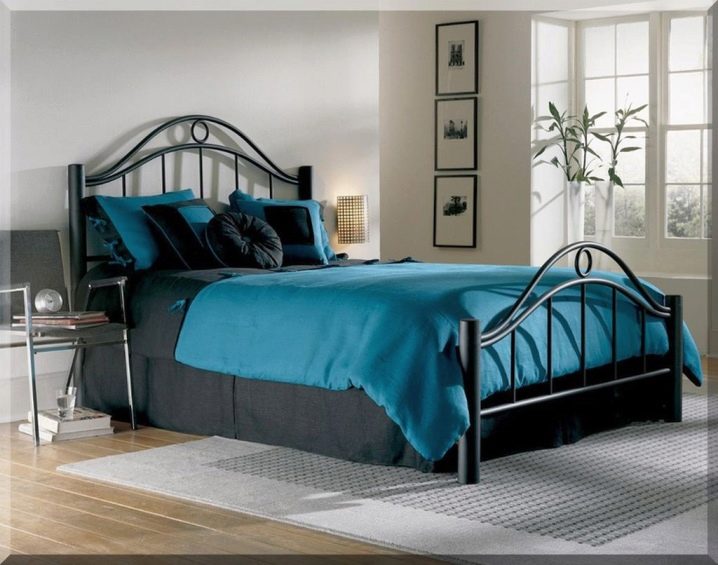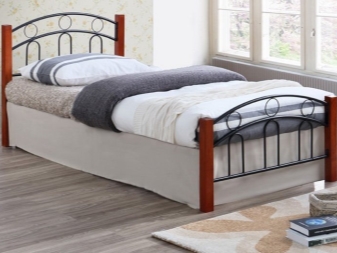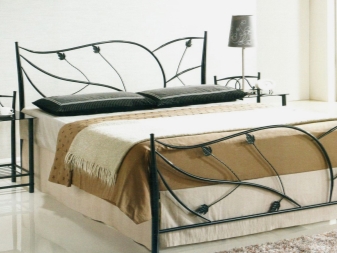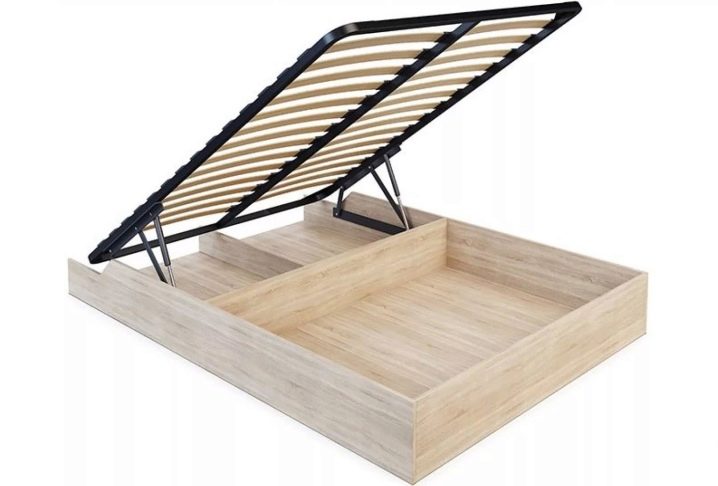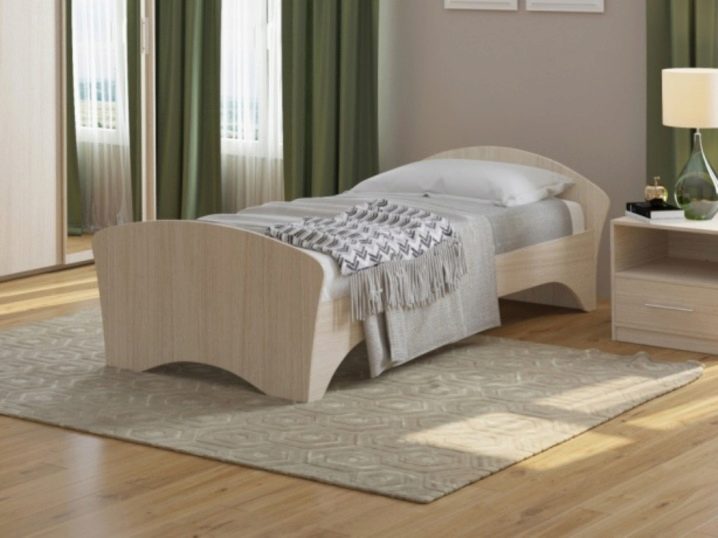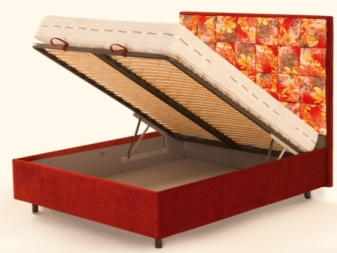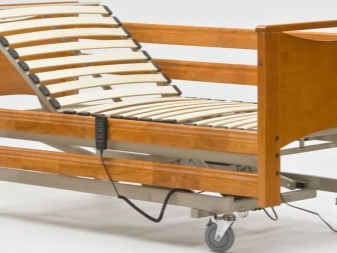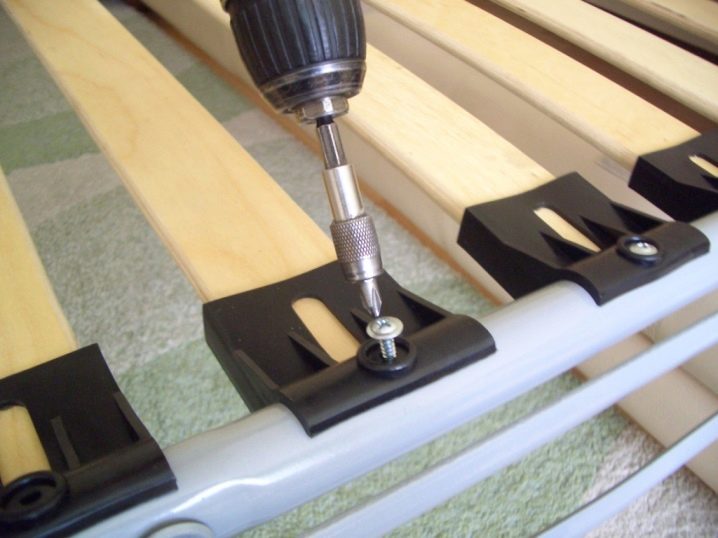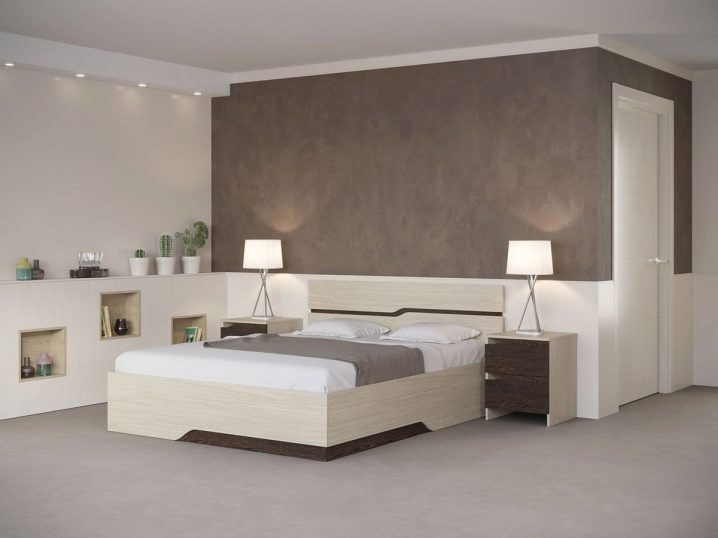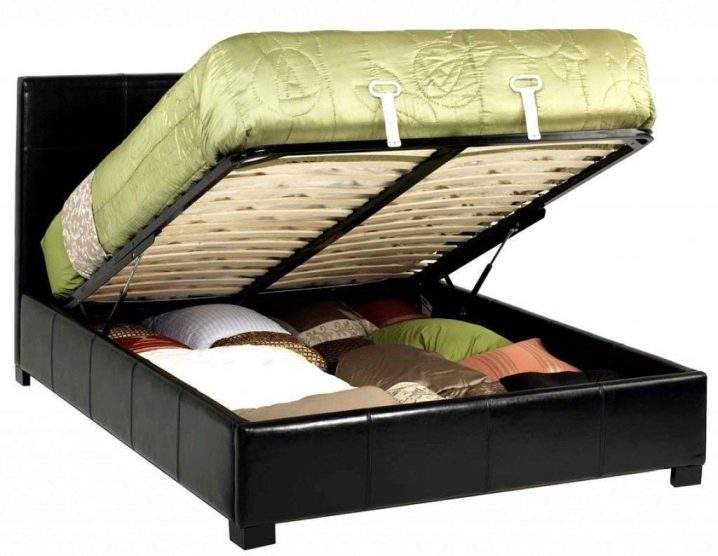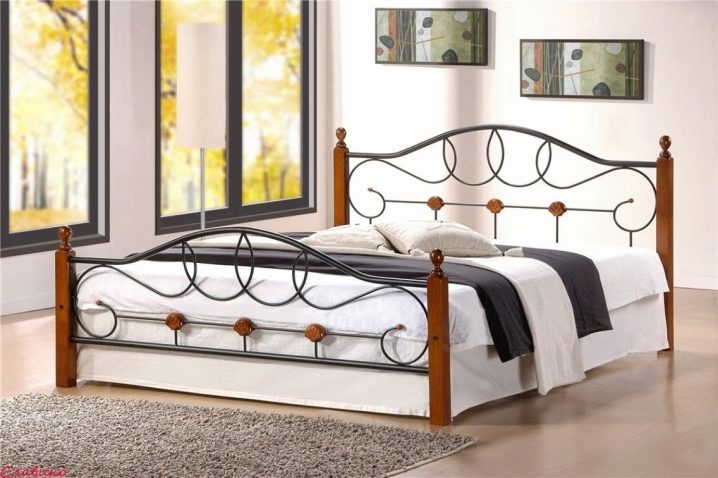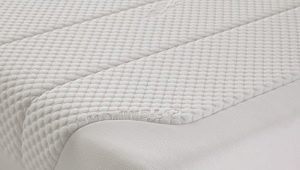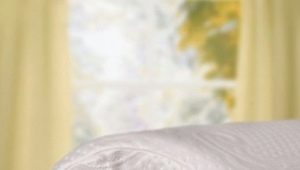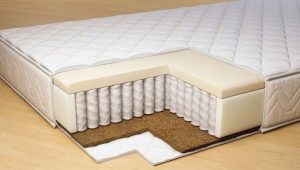Base for mattress
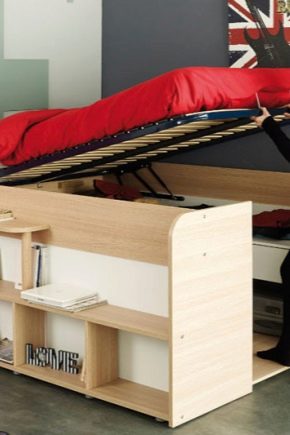
The most important thing in a bed is its foundation, which accounts for the weight of both the mattress and the person lying. Each bed has a base for a mattress, and it serves as an intermediary between the body and the mattress. It can be flat or slatted, have orthopedic properties, a lifting or transformation mechanism.
Design
The base is a metal or wooden frame, filled inside with slats or a solid plywood sheet. No bed can not be imagined without foundation with the bottom on which the mattress is placed. Rack base practically supplanted flat plywood. It is often called orthopedic due to the fact that it supposedly enhances the beneficial properties of the mattress: it evenly distributes the load on the spine and supports it in the anatomically correct position during sleep and rest.
The orthopedic base has a frame and lamellae - small wooden slats located horizontally at a distance from each other. Mostly lamellae are made of wood - solid birch or beech. Lamellas can be straight or slightly curved, the latter in the frame have the right to be called "orthopedic base."
Curved lamellae provide a cushioning effect, that is, the mattress on them literally springs under the weight lying on it, retains its orthopedic properties and quality indicators. In fact, it is a stand under the mattress.
Special features
The base is an indispensable element of any bed, and if we talk about its orthopedic form with curved slats, it has a number of advantages:
- Evenly distributes the weight of a person on the body of the bed and the mattress.
- Strengthens the orthopedic properties of the mattress: evenly distributes the load on the spine, reducing it.
- Has a depreciation effect or slightly springy during active use of the bed, which reduces the load on the body of the bed and on the mattress.
- Depending on the type and number of lamellas can withstand load from 90 to 240 kg on one berth.
- Allows the mattress to "breathe" due to not continuous arrangement of rails. The air circulates freely inside the mattress and box of the bed, it does not accumulate moisture and evaporation, which can significantly harm the mattress on a solid surface.
- The foundation protects the body of the bed from excessive loadtaking weight on yourself.
- She protects the mattress from premature wear and damage.
- The metal base is more durable in design and often has mattress anchorswho do not allow that to “run away” from their place and lose shape over time.
Among the downsides of the orthopedic foundation can be noted the complexity of his choice. There are too many models on the market with wide or narrow, long or short lamellas, which literally baffles an inexperienced buyer. Manufacturers usually recommend one or another type of mattress for a certain foundation, and all, as one voice says, there is nothing better than a bottom with narrow curved slats for any type of mattress (including independent springs).
The orthopedic base may be deaf or have a lifting mechanism.
The last device raises the bed above the bed body and opens access to the storage box under the bed.
The classic straight rack bed base is second in popularity. Such a frame allows the mattress to "breathe" due to the gaps between the plates, but by orthopedic parameters it is well inferior to curved lamellae.
The flat base is a relic of the past. It does not allow the mattress to breathe, does not provide a truly comfortable rest, and quickly loses its presentation - bends, breaks, begins to creak.
The main advantage of a flat base is low cost and ease of production, and that’s all.
Materials
The base of the bed can be made of metal or wood. Modern models are available with a metal frame - it is more durable in its design and allows you to securely fasten the slats, easy to replace them in case of breakage and fix the lifting mechanism.
Bases with a wooden frame require a more careful attitude toward yourself, it is difficult to replace the lamellae in it (due to the fact that they are often mortise).
Dimensions
Standard mattress sizes:
- Double beds: 140 x 200, 160 x 200, 180 x 200, 200 x 200 cm;
- Single beds: 90 x 190, 90 x 200, 100 x 200 cm.
The bases are determined by the same size range, but, as a rule, they are 3-4 cm larger than the actual dimensions of the mattress so that it can be easily laid on the bed. Mattresses are divided not only by type of filling, but also by their height. The higher the mattress, the more comfortable it is to lie on it. The optimal height of the orthopedic mattress starts from 10 cm, if the product is thinner, then it automatically loses its orthopedic "status". The height of springless mattresses is usually 16-20 cm, spring - 18 - 30 centimeters. This is explained by the fact that the springs take up more space inside the product and determine the greater depth of the seat.
Non-standard base sizes should be avoided: it is difficult to find a full-fledged mattress for them, and such a bed can be more expensive than a standard one.
Kinds
The base of the bed is divided into:
- Flat;
- Rack.
The base on the lamellae is called orthopedic if it is assembled from curved lamellae with a damping effect, straight lamellae do not give that orthopedic effect (they do not relieve the spine), but allow the mattress to "breathe" and retain its properties to the maximum.
The base may have a lifting mechanism that raises the bottom of the bed and provides access to internal drawers.
Models with a lifting mechanism and an orthopedic base are one of the most popular beds on the market: an entire dressing room with an area of almost two cubic meters unfolds under the bottom.
The base may be with legs (euro frame) or not have them. Euro frame can serve independently and does not require the purchase of a case or backrest. The base without legs is usually sold with the body of the bed and literally "falls" on top of it, forming a complete structure. Skeleton soft beds mainly come complete with orthopedic base and curved lamellae (13-15 pieces for each bed).
According to the transformation mechanism, the base is:
- No transformation;
- With manual gear;
- With electric drive.
Classic models without transformation are most common and have a low / average price category. For transformable bases, a special mechanism is used - manual or electric, which raises and lowers the back, footboard.
Accessories
The lamella is an indispensable element of an orthopedic foundation, on which a load of up to 7–15 kg falls (in total, up to 240 kg per bed).They are attached to the bed frame with lato-holders, which can be built-in or removable (plastic and rubber).
Spare parts that may be required when installing the bed frame - lifting mechanism, latoders, all sorts of screws. The grille is usually mounted on the bed body with self-tapping screws or mounted on a lifting mechanism (with gas lifts, springs or a manual lift). In addition to the frame of the bed and its base is fixed back. If the bed has no body and is solely a base on the legs, then the backrest mount is determined individually.
Top manufacturers
Ormatek manufactures orthopedic inserts with and without legs for single and double beds, with or without a lifting mechanism. In the brand assortment, you can find classic non-orthopedic bottoms with plywood instead of lamellae: this base also serves as a bed frame and often has legs.
Good bases are made by Russian manufacturers like Ameli (Yartsevo), Glazovskaya MF, Mebelny Dvor, Askona, Izhmebel, Oksmebel and other manufacturers.
How to choose?
The choice of the bed base is a primary task and more important than the choice of its body. It is the foundation that provides high-quality and healthy sleep, takes upon itself the entire burden and increases the life of the bed.
To make a decent choice, follow the simple algorithm:
- Bottom. Prefer slatted bottom with lamella instead of solid plywood. Firstly, the slats do not allow the mattress to sink, and secondly, they will allow it to breathe.
- Lamels. Choose curved panels - they have a light cushioning and evenly distribute the weight on the mattress. A small number of lamellae and a large distance between them allows using only springless mattress or Bonnel type. Modern mattresses with an independent spring block require narrow slats that are closely spaced to each other to provide reliable support for the springs. Especially important are closely spaced each other for mattresses with a large number of springs that are smaller in diameter.
- Frame In 100% of cases, choose metal. He and stronger, and will last longer. Wooden frame requires a more reverent attitude.
- Type of mounting slats. Fasteners are called latoderzhatelyami.They can be mortise or overhead. It is better to choose rubber overlays, which allow you to replace one or several lamellas when they break and have a slight spring effect. However, if the mattress is more than 20 cm high, then it is not necessary to talk about the depreciation properties of the holders.
- Sleeping place. Two beds in a bed of 140 cm in width combine the metal frame of the base. And for each place there should be its own narrow base with bent (or straight) rails. This will allow the base to perform its orthopedic function and withstand greater weight (of a person and a mattress as well).
- The level of comfort and the possibility of transformation. Orthopedic bases with a transformation mechanism allow the lattice to accept the curves of your body. For example, you can raise the headboard or footboard, adjust the backrest tilt and create a bottom position that would be as comfortable as possible for placement. Models with a mechanical drive are more affordable, but more difficult to set up. Electro-transformation bases will cost more, but they are easy to operate and literally select a comfortable position for you.
- Additional features. Found grounds with the ability to control the stiffness of the lamellae. Lats in such models are interconnected by special clamps that can be relaxed and stretched. Bases with the ability to adjust stiffness are especially suitable for people with a sore back or problem spine.
The ideal choice is an orthopedic base with curved lamellae 4-6 cm thick and a metal frame. The material of the slats is birch or beech. The latter is used in more expensive designs and is practically not inferior to birch plates.
How to choose the basis for the bed, see the following video.
How to fix?
The base is laid on the body of the bed and attached to the side of the headboard. If the installation of a lifting mechanism is meant, then the lattice frame is fixed to this mechanism at the same headboard or on the side (depending on the method of opening). After that, it is necessary to place a mattress on the bed, making sure that it fits exactly in size and does not form free space on the sides and at the foot / headboard.
